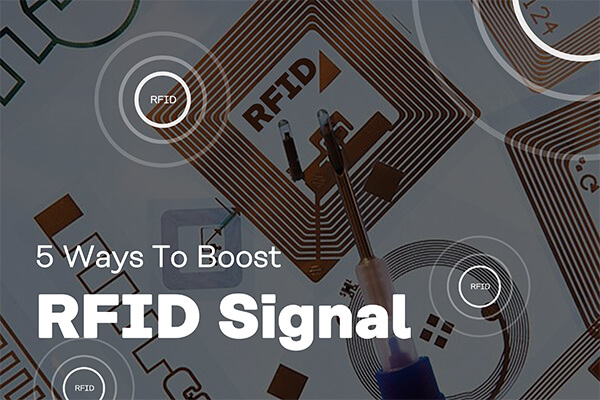Every business that relies on the RFID system to work requires the system to be efficient in how it works and this means getting accurate readings from longer distances. When you improve your RFID signal, workers find items faster and get them to their destination more quickly. However, in some countries, there is a limit to the antenna signal strengths due to possible interference with other radio signals and also for health reasons relating to workers who spend all day immersed in radio waves. Boosting the RFID signal simply depends on the hardware that is used, however, the following ways can help you boost the RFID signal.
1. Reader settings
Reader settings affect the range of your detection. Higher power settings increase the range of your reader signal without buying any new equipment or antennas. Sensitivity settings can also change your read range. Higher sensitivity can detect fainter signals, and these signals come from farther away. To maximize the read signal, ensure that your reader is set to its highest receive sensitivity.
2. Antennas
Higher-gain antennas get more power from RFID readers which yield a higher signal compared to lower-gain antennas. Larger antennas can read RFID tags from 75 feet or more which is a greater distance for modern warehouses. Therefore, if you need more signals, use higher gain antennas (eg 9dBi, or higher).
3. Antenna’s polarization
Polarization is all about the type of electromagnetic field the antenna produces. Circular polarization splits the field in two and makes it spin to cover as many planes as possible while linear polarization creates an electromagnetic field along a single plane. Antennas with linear polarization extend their fields farther because they don’t split their power in two, and it only works when your reader aligns with your RFID tags. When you have antennas with the same gain but different polarizations the linear one reaches out farther, which boosts the RFID signal.
If the tags are aligned with the antenna’s polarization, linear polarized antennas will read farther than circular polarized antennas. The circular polarized antennas will read farther than linear polarized antennas if the tags are not aligned with the antenna’s polarization. Tag orientation becomes much more important with linear antennas than with circular antennas due to the nature of the antenna’s field. Additionally, because the power is not split across more than one axis, a linear antenna’s field will extend farther than a circular antenna with a comparable gain, thus allowing for a longer signal when aligned with the RFID tag.
4. Shorter cables
You need shorter cables from the reader to the antenna to boost the signal because longer cables degrade signals between readers and antennas. Also, cables with higher insulation ratings keep more power going to antennas. For maximum read signal, connect the antenna to the reader with the shortest cables you can get away with, and don’t use unnecessary multiplexers or adapters.
5. SOAP method
SOAP stands for size, orientation, angle, and placement. Therefore, larger RFID tags read farther away than smaller ones. To optimizes the reads, tags must have an orientation and angle. Tags should be at a perpendicular angle to the antennas and facing the antennas whenever possible, for linear polarization.
You need the right kind of RFID tag for the application, in terms of placement. UHF RFID tags are affected by metal, therefore, keep those tags away from any metallic objects. It’s advisable to put your RFID tags away from metal and water if the tag doesn’t say something about background sensitivity or is made especially for going on metal.
Nexqo is a professional RFID hardware provider with more than 10 years of experience in the RFID industry. Click here to learn how the RFID tag works.
You can also click here to learn more about the products that you can use in your project. If you are not sure, welcome to contact our sales experts any time.
.png)
